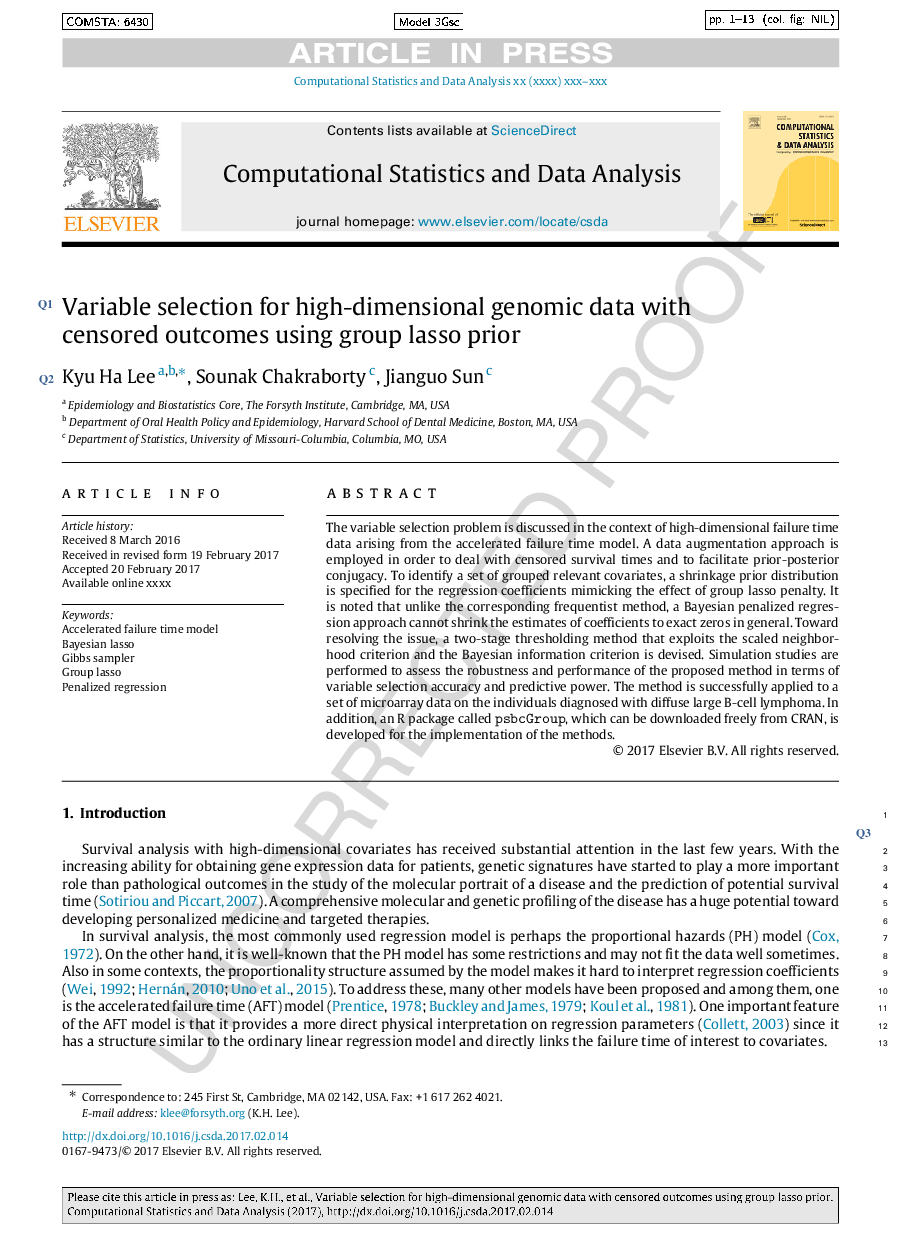| Article ID | Journal | Published Year | Pages | File Type |
|---|---|---|---|---|
| 4949325 | Computational Statistics & Data Analysis | 2017 | 13 Pages |
Abstract
The variable selection problem is discussed in the context of high-dimensional failure time data arising from the accelerated failure time model. A data augmentation approach is employed in order to deal with censored survival times and to facilitate prior-posterior conjugacy. To identify a set of grouped relevant covariates, a shrinkage prior distribution is specified for regression coefficients mimicking the effect of group lasso penalty. It is noted that unlike the corresponding frequentist method, a Bayesian penalized regression approach cannot shrink the estimates of coefficients to exact zeros in general. Towards resolving the issue, a two-stage thresholding method that exploits the scaled neighborhood criterion and the Bayesian information criterion is devised. Simulation studies are performed to assess the robustness and performance of the proposed method in terms of variable selection accuracy and predictive power. The method is successfully applied to a set of microarray data on the individuals diagnosed with diffuse large B-cell lymphoma. In addition, an R package called psbcGroup, which can be downloaded freely from CRAN, is developed for the implementation of the methods.
Related Topics
Physical Sciences and Engineering
Computer Science
Computational Theory and Mathematics
Authors
Kyu Ha Lee, Sounak Chakraborty, Jianguo Sun,
